Four Fours Challenge Activity
The four fours math challenge is a classic activity for a reason! How many numbers from 1-100 can you create using exactly four fours?
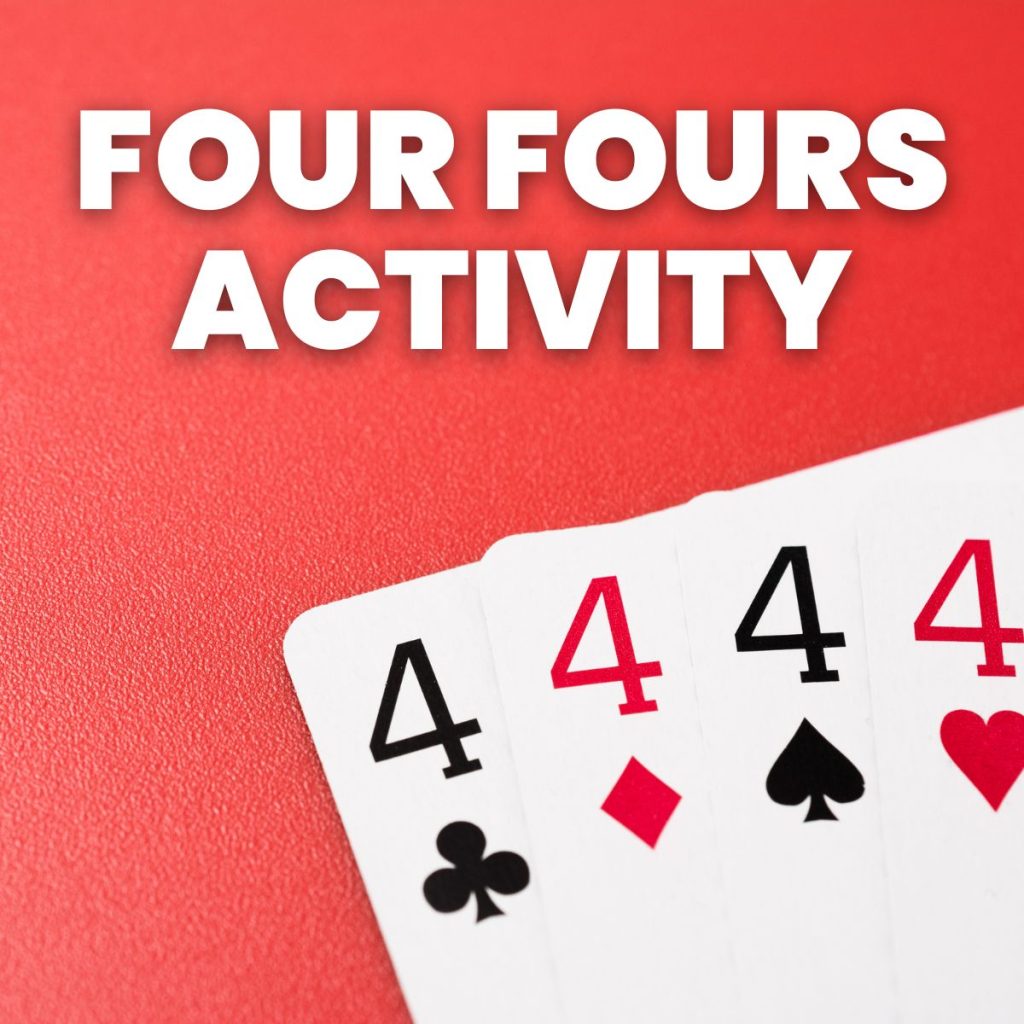
This puzzle is just one of many free printable number challenges that I have created for my own classroom and am sharing with you!
Be sure to check out my entire collection of free printable math puzzles.

Four Fours Challenge Instructions
Form the numbers 1-100 using exactly four fours. Feel free to use addition, subtraction, multiplication, division, exponents, roots, factorials, decimals, and concatenation.
Using this Puzzle in the Classroom
I recently gave this four fours challenge activity during the last few weeks of the school year. We got off to a rough start, but it ended up being a super engaging and enjoyable math puzzle!
My students took their end-of-instruction exam on April 13th. That was two weeks ago, and we still have three weeks left in the school year. My students and I worked extremely hard to cover the entire curriculum before Spring Break began.
Now that testing is over, it’s been a full-time job keeping them busy. I know a lot of people are probably reading this right now and thinking that I should still be teaching new content.
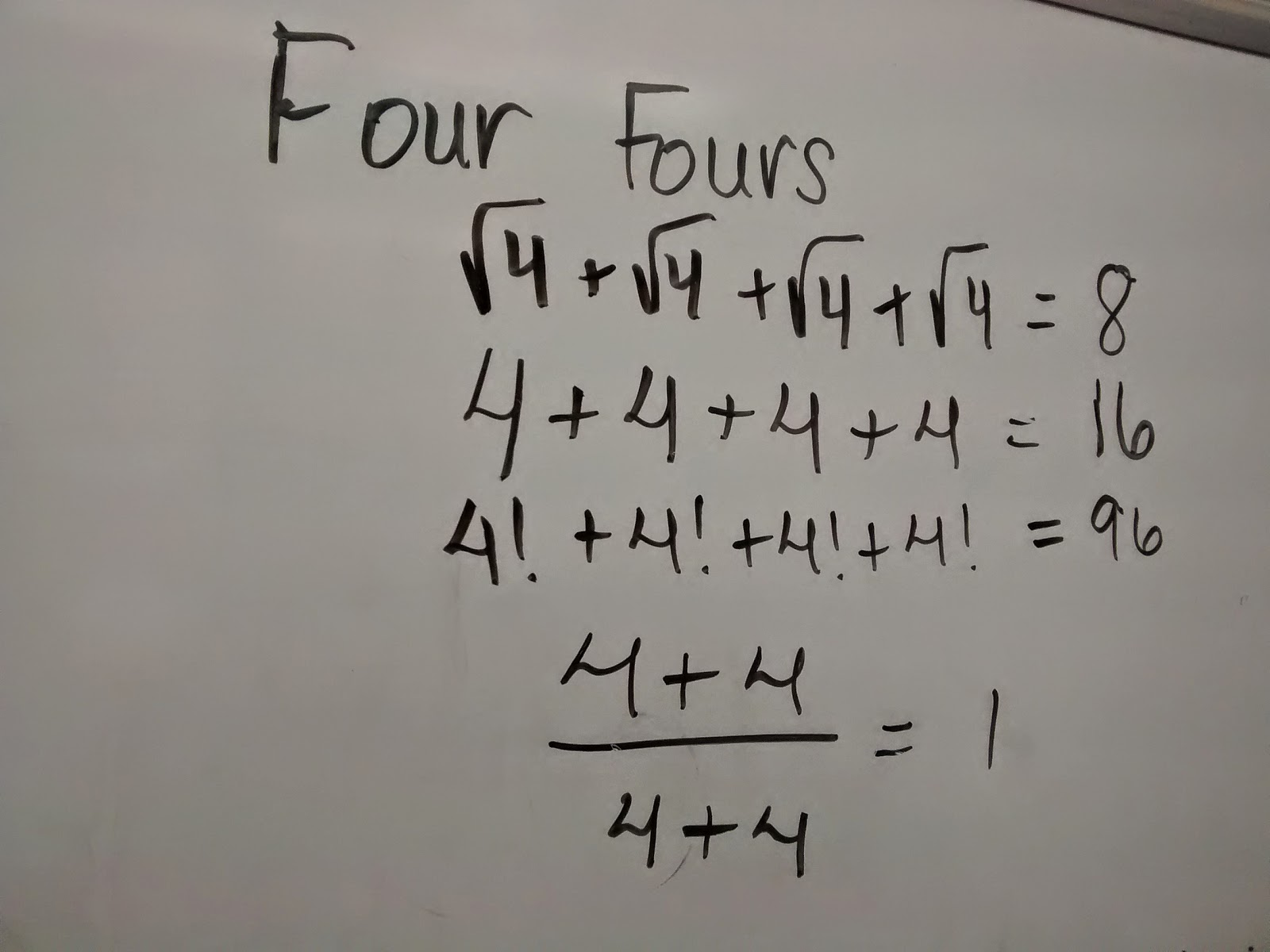
That just isn’t feasible with how my school structures testing. We started testing April 13th and will finish May 7th. Of course, we aren’t testing every day in that window. That would be insane.
But, the kids who show up to each class period each day are a surprise.
So, I’m taking this opportunity to have my students reflect on the school year. I’m taking this opportunity to pose problems that stretch their brains. I’m taking this opportunity to engage them in the sorts of activities that are meaningful but don’t tie directly into the tested curriculum.
My kids keep coming to my class expecting to watch a movie. Eventually, they’re going to realize that’s not how Ms. Hagan rolls 🙂
Introducing Students to Factorials
My students had never been exposed to the idea of factorials before, so that was a fun mini-math lesson to give. I’ve never used factorials with my students because they aren’t included in my state’s tested standards.
But, you know what, that shouldn’t matter. I need to stop worrying so much about what’s on the test. I’m selling my students short.
I have a chance to expose them to a side of mathematics they have never seen, and I need to take that.
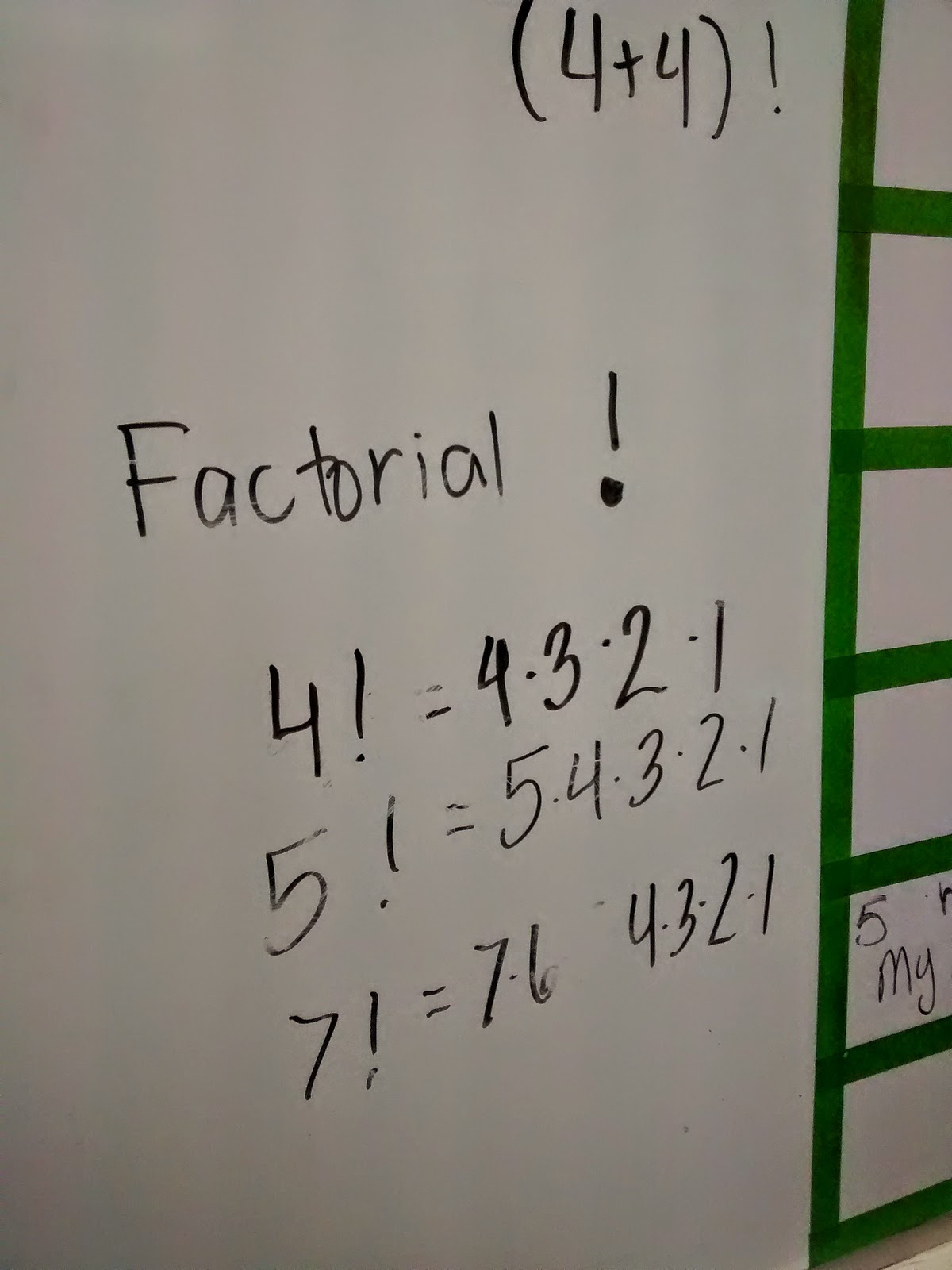
Several of my students asked some really good questions about where factorial would fit in with the order of operations. I wish I had asked them where they thought it fit in instead of just giving them an answer.
I have created a factorials chart to print as well as a factorial poster which you can hang in your classroom for students to reference.
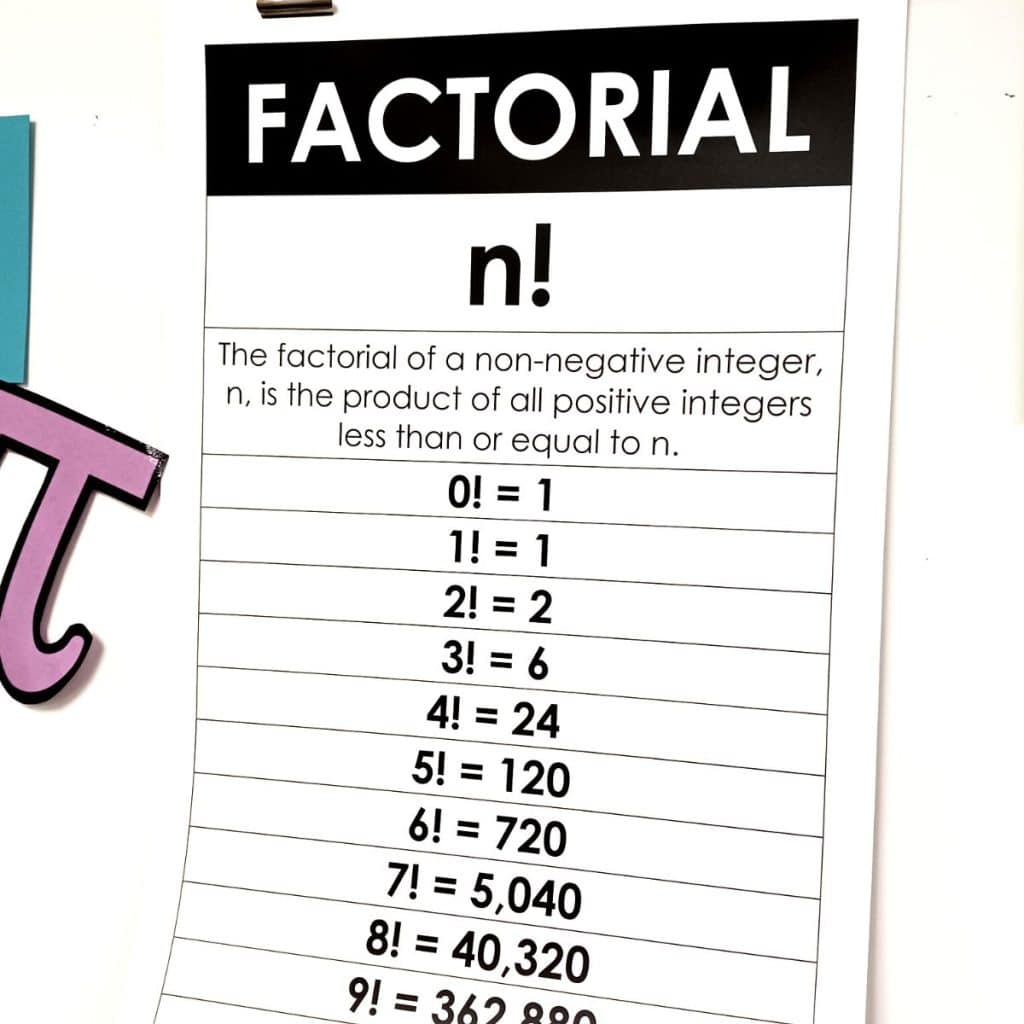
Printable Four Fours Challenge Worksheet
To structure this activity and my students’ responses, I printed off the “Mind Your 4s” sheet from 17GoldenFish.
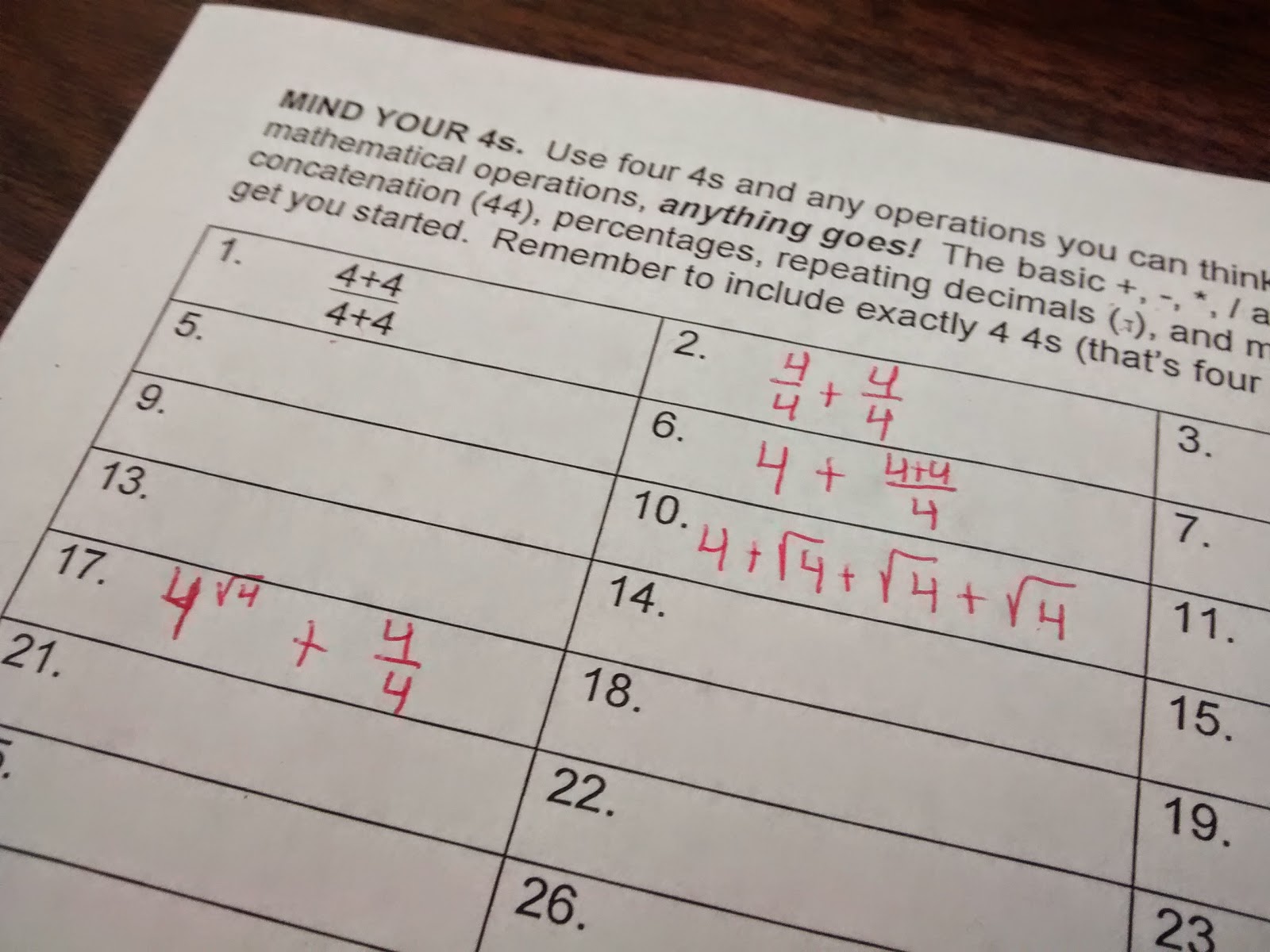
Reflecting on the Four Fours Challenge
I wish I could say I passed out the pages for students to write their answers on and the room was instantly filled with rainbows, butterflies, and smiling students.
That’s NOT what happened.
In fact, for the first 30 minutes of first period, I thought I had made the biggest mistake in the world by assigning this task to my students.
There was complaining. There was grumbling. Yes, I realize those are kind of the same thing.
I guess I just want you to realize that the vibe in my classroom was not a good thing.
Students were asking, “Ms. Hagan, why do you hate us?”
To this, I answered, “I don’t hate you. I love you. That’s why I’m trying to stretch your brain today.”
The Growth Mindset Bulletin Board was working overtime.
Student: This is too hard!
Me: This will take some time and effort!
Student: I give up.
Another Student: I will use some of the strategies I’ve learned.
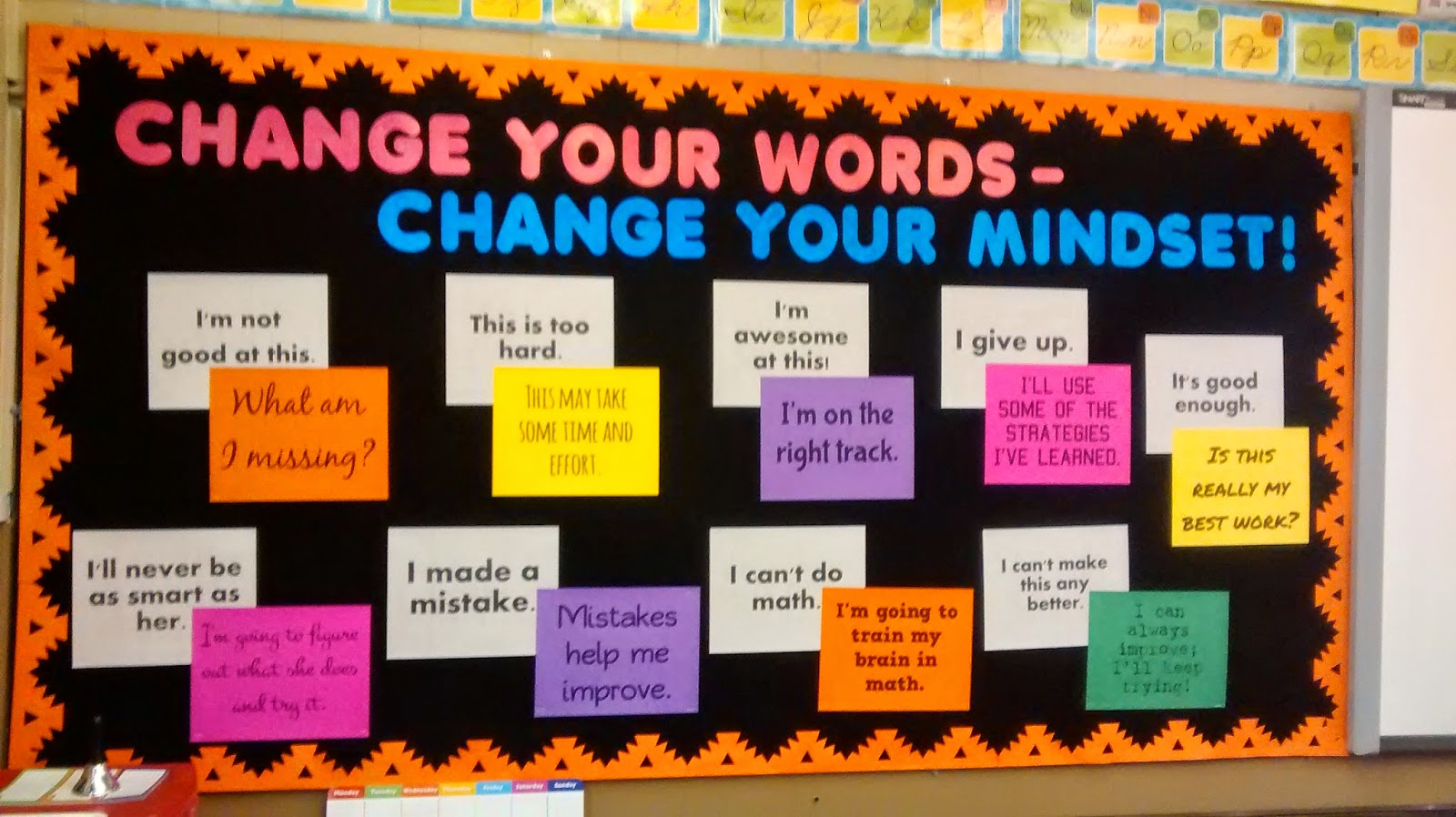
Seriously, it wasn’t pretty. I have only about 9 students in my first period Algebra 1 class. 4 of the students were working semi-diligently.
The other 5 students were sitting and complaining. They tried to just sit and play on their cellphones, but I stopped that by threatening to take them away for the rest of the day.
No one wants to lose their phone for the entire day during first period! I didn’t think my students were getting anything out of this activity.
But, thirty minutes into class, something changed. One kid excitedly announced that he had figured out how to find a certain number.
Another student asked how he had found it. Instead of telling what he did, he gave a hint about using factorials. This led to a couple of other students figuring it out and exclaiming happily as a result.
Pretty soon, the kids were going crazy with excitement each time they found a new number. They were helping each other, coaching each other, encouraging each other.
Students who sat idle for the first half of class were talking about how they didn’t find as many solutions as their classmates because the rest of the class had gotten a head start.
Teenagers…
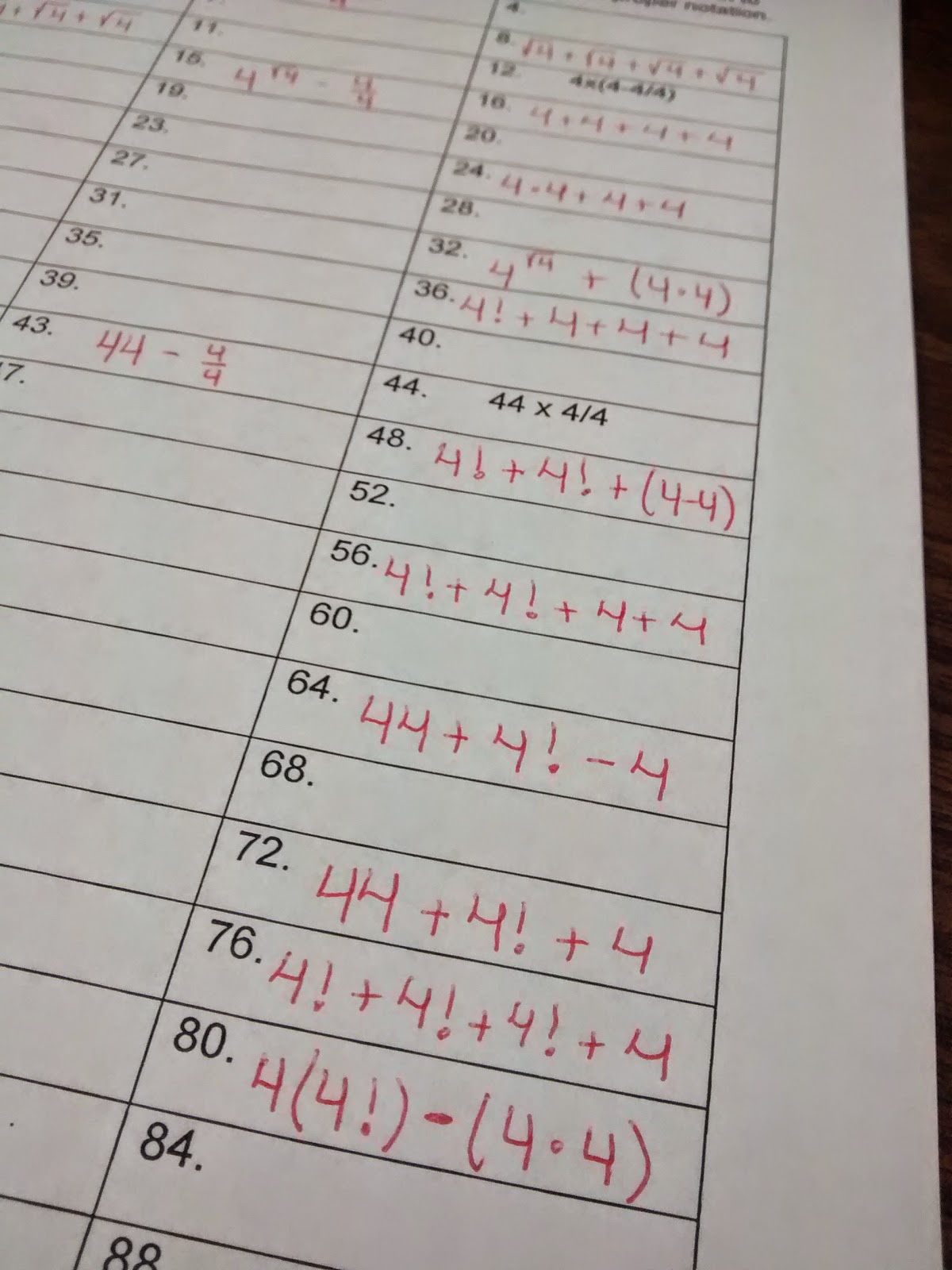
The same cycle continued for much of the day. The class would start off grumbling.
But, the excitement of a student or two would somehow turn the class around. The sheet I gave students to fill out had 5/100 answers already filled in.
To get their participation grade for the class period, students had to fill in 25 additional answers. Of course, they were encouraged to do more than that.
It was fun to see students make observations during this activity. For example, in almost every class period, one student would exclaim that the majority of the answers they had found were in the far right hand column.
To this, I said, “Well, it makes sense since that column is multiples of four.” I’m kicking myself now, though. What I should have said: “How interesting! Why do you think that is?” #stilllearning
I did have a problem with a student looking up answers on their phone. I’m just skeptical when the completed assignment looks like this.
I know that as I worked on the activity that my answers were much more sporadic and spread out.
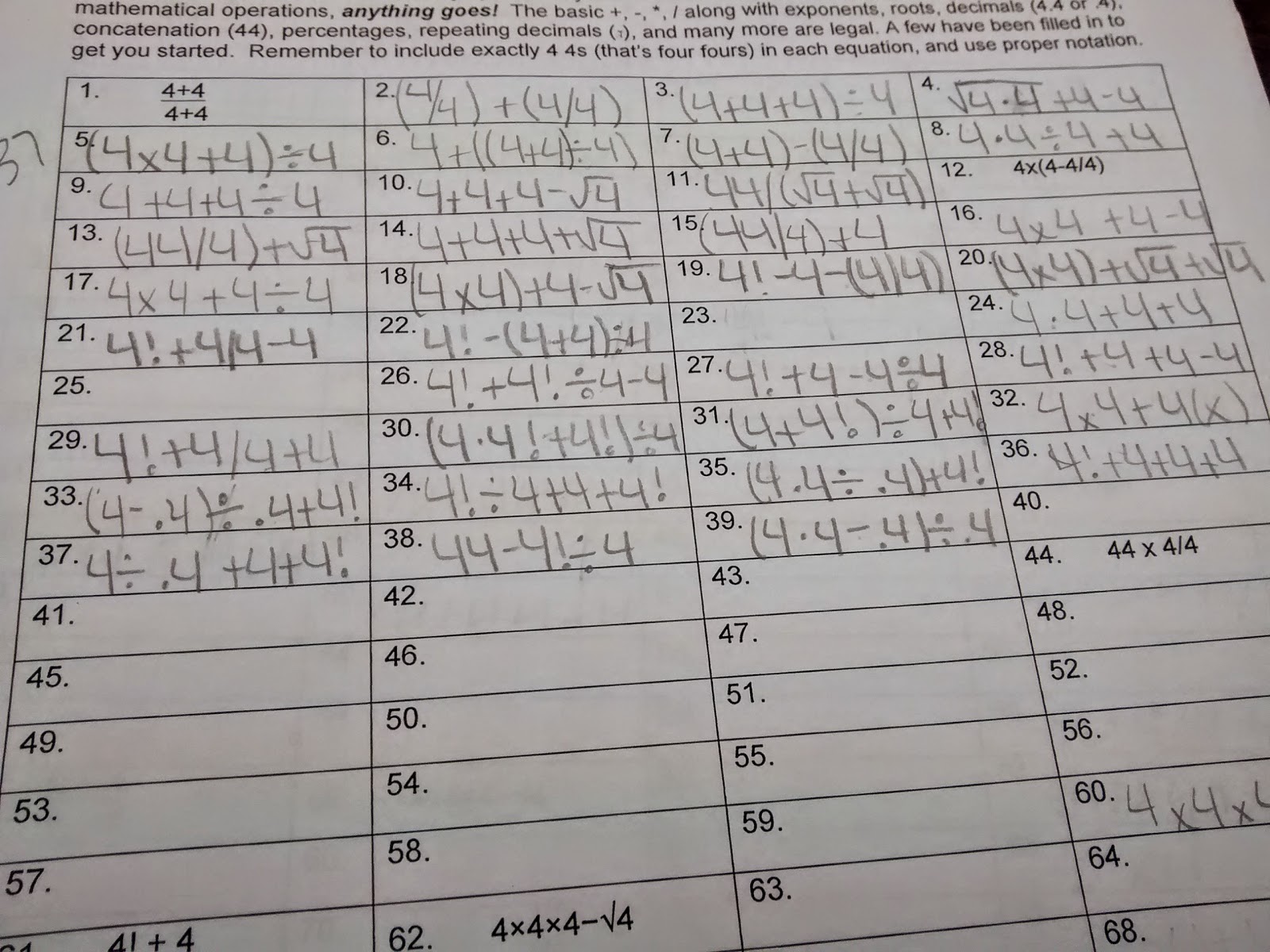
I had several students remark that this activity would have been so much easier if we were using the number 5 instead of the number 4.
I joked that they had just found the next day’s activity for me: Five Fives.
When I gave the students a logic puzzle the next day, they complained that they would rather be solving Five Fives.
It was a great brain stretching activity. It was a good review of the order of operations. It let my students experience factorials.
And, they learned what the word concatenate meant. It kept them busy for an entire fifty minute period. And, I think it was a lot of fun. Definitely doing this again!
Getting Parents Involved with the Four Fours Challenge
Dana Harrington shares a brilliant idea where she invites parents to participate in the Four Fours Challenge via Desmos. What a great idea to share with parents what is happening in your classroom!
Puzzle Solutions
Puzzle solutions are available on a password-protected solution page. I do not openly post the puzzle answer keys because one of my goals as a resource creator is to craft learning experiences for students that are non-google-able. I want teachers to be able to use these puzzles in their classrooms without the solutions being found easily on the Internet.
Please email me at sarah@mathequalslove.net for the password to the answer key database featuring all of my printable puzzles and math worksheets. I frequently have students emailing me for the answer key, so please specify in your email what school you teach at and what subjects you teach. If you do not provide these details, I will not be able to send you the password.
Not a teacher? Go ahead and send me an email as well. Just let me know what you are using the puzzles for. I am continually in awe of how many people are using these puzzles with scouting groups, with senior adults battling dementia, or as fun activities in their workplace. Just give me enough details so I know you are not a student looking for answers to the puzzle that was assigned as their homework!

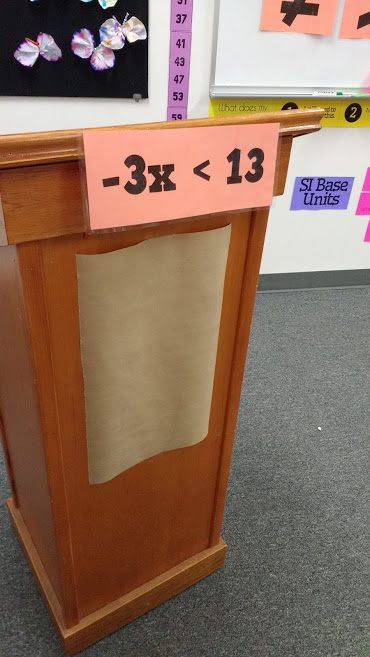


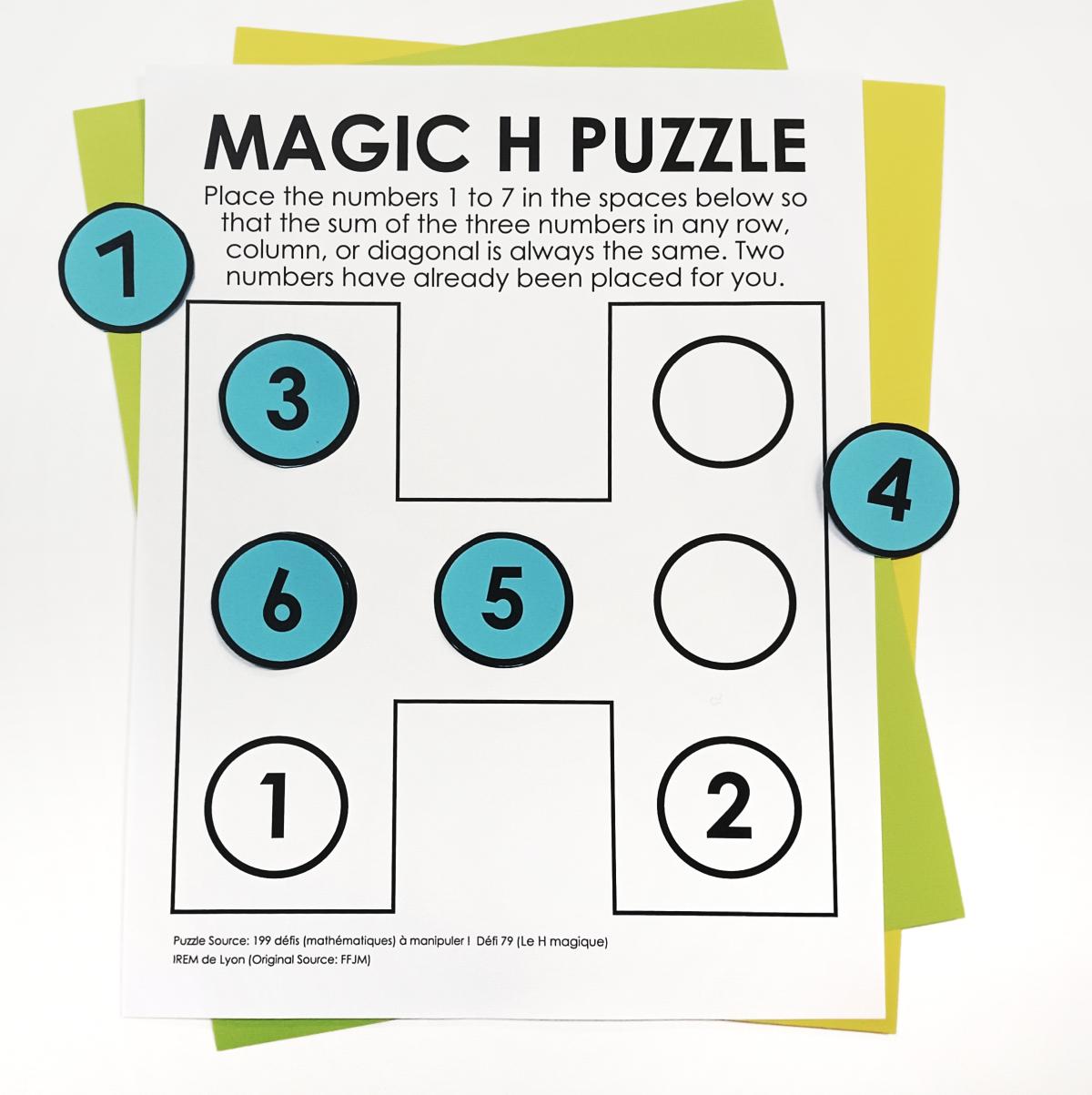
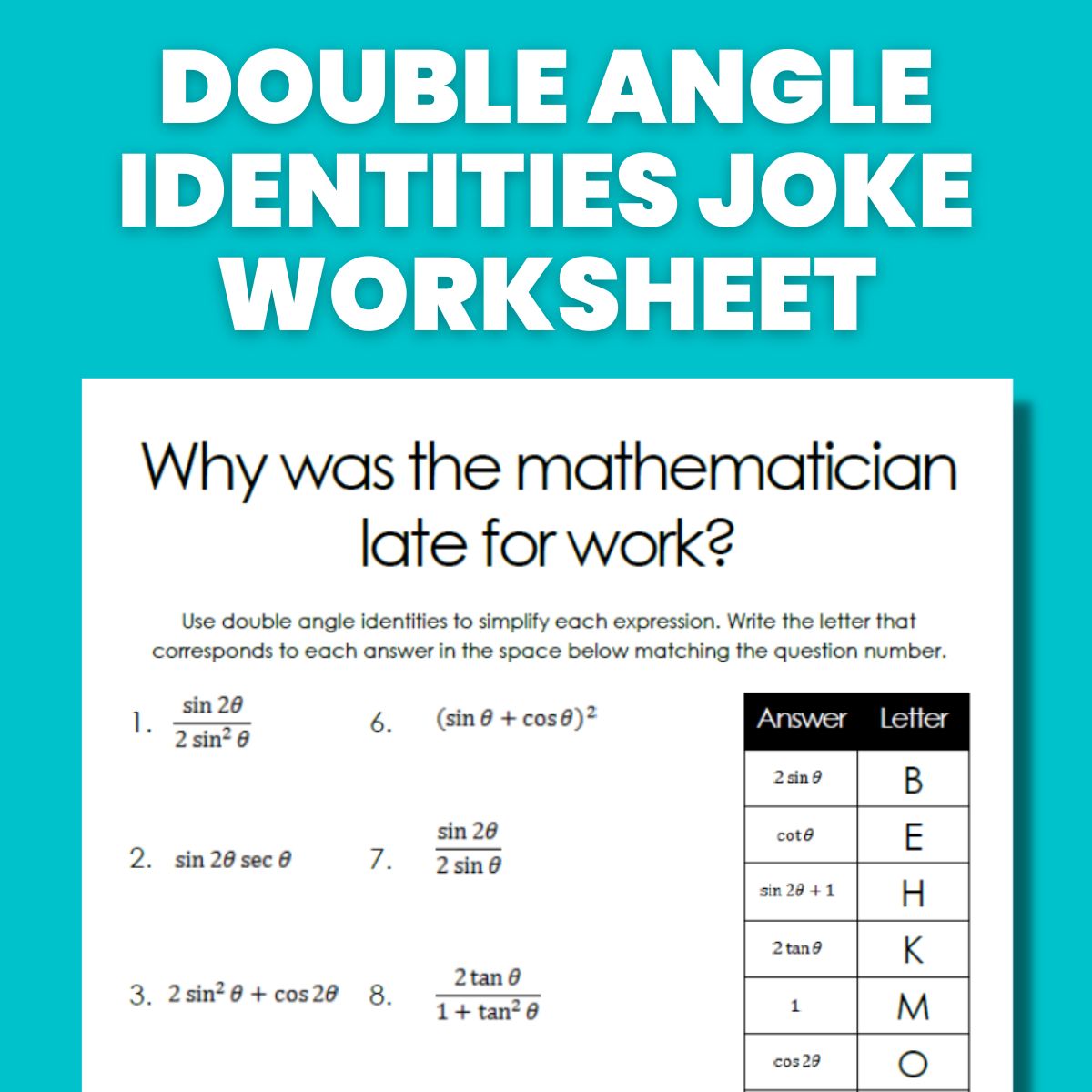

Wow! This is awesome. My uncle actually taught me this math puzzle, and although he's American, he lives in the Middle East! I wonder who came up with this and if it's really possible to get all numbers (up to a certain point) with just 4 fours! I never thought of doing this with my students, but then again, we don't have free days because we don't participate in state testing. After my uncle taught this to me, I tried figuring them out in my head for months afterward whenever I was bored (and I got pretty far although some numbers are harder than others to get). Talk about being a math person! 🙂
How cool! I'm not sure where the problem originated. You could do it as a 5-minute opener instead of an entire class period.
I am trying this with my kids today! I am excited to see how it goes! Alexis
Hope it goes well!
That is a crazy testing schedule? Our last day of June 19th, my students will take their EOC on June 11th. Our students taking the SBAC take it at towards the end of May after AP testing. For the ELA they are doing parts of it within their English classes. For the longer portions we have 3 late start days where only the students testing come on time. We do the same for our math and biology EOCs in June. After the EOC I'll have 3 days before finals. I may do a project instead. We are teaching quadratics and transformations right now and will finish the year with data.
I need to proof read before posting better.
LOL. I do the same thing! 🙂
I like the idea of late start days. I wish my school district would do something like that. Testing just throws off our entire day.
We end up with 6 late start days for testing. 3 in May and 3 in June. We run a different schedule where we see 3 classes day 1, the other 3 day 2, and all 6 on day 3.
My 8th grade Pre-Algebra students are completing this activity today. I was pleasantly surprised at how engaged they were with it. I have the numbers 1-100 written on my board, and as students come up with an expression they come to the board and write it down. Then I am underlining the number after I have verified the expression works. I am hoping by the end of the school day we have all numbers filled in. Thanks for sharing this activity!
Yay 😀 Hope your students are able to persevere in finding the trickier numbers!
You've done a great job! I give you a piece of advice, hire a first class specialist from top-essays-uk.com, and you'll get more visitors.
This puzzle is similar to a bulletin board that I put up at the beginning of each calendar year. I got the idea from another math teacher friend of mine who got it from her high school math teacher. The challenge of the bulletin board is that students have to use each of the numbers in the new year only once (using any mathematical operation they can think of) to make them equal the numbers from 1 to 100.
For instance for 2016, they could just do 20 + 16 = 36. My bulletin board only leaves space for two answers for each number and they have to be completely different from each other. Each day students can turn in up to 2 answers (it is on a first come first serve basis) and they get bonus points for any correct answers. The students get really creative and also learn what factorials are (especially that 0! = 1). They also have to use the order of operations. I have had to hand back many answers because they did not properly use the order of operations. It is a great way to get the students excited about using math.
I've done this before, too! SO fun!
Do you allow the students to use the floor and ceiling functions? It is not clear to me that all numbers in the table can be "solved" in terms if 4's, but surely using floor and ceiling functions helps a lot, and give students still another look at real numbers.